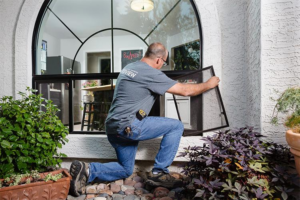The Importance of Managing the Temperature of a Server Room
It’s easy to forget about the importance of keeping server rooms at the appropriate temperature because they’re usually vacant, and nobody spends much time in them. Keeping the server room at a constant temperature is a vital part of keeping business running smoothly. Overheating is a real and common issue since servers create a considerable volume of heat and are commonly placed in small areas. In this article, the specialists from Correct Temp Heating & Cooling will tell you all about it.
What Happens When a Server Room Becomes Too Hot?
Server room equipment is at risk of melting if temperatures rise to 85 or 90 degrees Fahrenheit. When this happens, the entire computer is often lost, and in some situations, long-term difficulties linger even when the machine has been replaced.
It’s possible for organizations to come to a complete and immediate halt until the problem is fixed, as servers are often compared to the technical ‘brain’ of an organization, powering its software programs, hardware, and other activities. Perhaps even more disturbing is the fact that a server outage can cost a medium or big corporation $300,000 an hour, or $137 to $427 each minute, depending on the size of the company.
What Temperature Should a Server Room Be?
The American Society of Heating, Refrigerating, and Air Conditioning Engineers (ASHRAE) is the authority we consult when deciding on HVAC industry best practices. ASHRAE recommends maintaining a temperature range of 64°F° to 80°F° within data storage facilities. The same group that establishes humidity guidelines also suggests that data centers keep humidity between 20 and 80%.
The ideal temperature for a server room is around the lower end of the acceptable range; this gives administrators some breathing room in case a unit fails or the temperature rises for some other cause.
How Do They Keep the Server Room Cool?
Server rooms and data centers need climate control. By consulting with a commercial HVAC contractor in Frisco, TX, business owners and IT professionals can investigate specialized cooling solutions that can handle the heat generated by their servers, keep the server room at an optimal temperature, and send alerts to the proper parties if the temperature rises above certain preset limits.
Internet server room HVAC design is changing and evolving all the time. Before selecting how to construct the solution, a commercial HVAC installation would likely measure airflow in the server room and identify hotspots. The optimal answer has three potential benefits:
- The room housing the server and other equipment should be kept at a cool temperature.
- Eliminate hot spots and improve airflow in server racks to protect critical hardware.
- Manage humidity levels.
Who Is Responsible for Maintaining the Server Room’s Climate?
It is common practice for a company’s IT division to be held liable for the server room’s environment. Typically, a commercial HVAC installer will work with an IT director or manager to determine the optimal method for keeping the server room at a constant temperature and humidity and then implement that method, including any alarms or notifications for temperatures or humidity levels that fall outside of the acceptable range.
What Work Is Needed?
In general, it’s a good idea to always keep an eye on the temperature in the server room. A computerized monitoring and alerting system allows businesses to keep track of the server room temperature at all times and from anywhere.
Any company that stores data on internal servers needs to pay close attention to the temperature in the server room. Commercial HVAC installation services from Correct Temp Heating & Cooling are often necessary to find and implement the best option for sustained success. Contact us at 469-804-3297 to book an appointment today.





